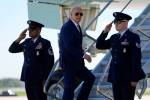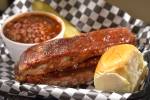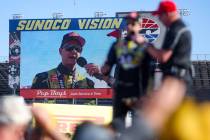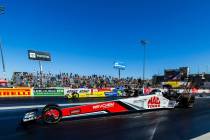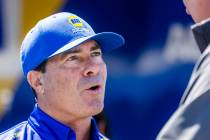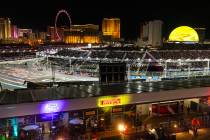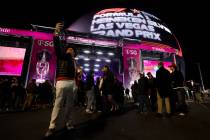NASCAR stuck on wrong side of fence fuss
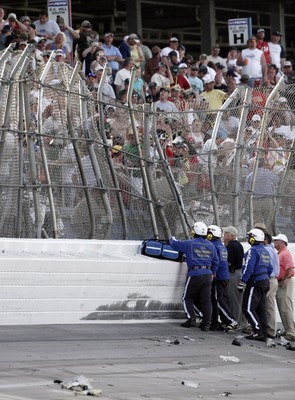
I don’t care if adults want to risk their lives by driving race cars.
If they want to fly around tracks like the one in Talladega, Ala., that’s fine. They’re paid handsomely to do so.
But when a race car flies through the air and is responsible for hurting spectators, then we’ve got a problem. Flying cars should be a concern only if you live next door to George Jetson.
Sunday at Talladega, Carl Edwards was leading the Sprint Cup race on the last lap when he tried to block a pass attempt by Brad Keselowski a few hundred feet from the finish line.
Edwards’ Ford got clipped by eventual winner Keselowski, spun, went airborne and was launched off another car’s hood, becoming a Cessna before being caught by an antiquated fence and then flung back onto the track just short of the finish line.
Debris from Edwards’ car and the fence injured seven fans, with one suffering a broken jaw. Edwards wasn’t injured, largely because of safety enhancements mandated by NASCAR after Dale Earnhardt’s fatal crash.
“The retaining fence did what it’s supposed to do,” NASCAR spokesman Jim Hunter said Monday during a teleconference. “There was some debris that went into the grandstand that fortunately did not invoke serious injury.”
I guess jaw surgery that requires insertion of two plates and having your mouth wired shut for six weeks is only serious if it’s your jaw.
“If there is something we come up with as we analyze this accident … we’ll make it as safe as we humanly can,” Hunter said.
NASCAR has waited too long to modernize fencing systems used at many of its races.
Sunday’s race featured three multicar crashes at 200 mph. They happen frequently at high-banked Talladega because NASCAR mandates the use of restrictor plates on intake manifolds to dampen horsepower and keep speeds from exceeding 200 mph.
The cluster crashes are so popular they have a name: The Big One.
Lowe’s Motor Speedway near Charlotte, N.C., had a promotion before Sunday’s race that determined the price for 1,000 tickets to its next event. The price would be set by the number of cars involved in Sunday’s biggest crash. The winning — losing? — number was 14, so the price is $14.
“We would rather not dignify that type of promotion with a comment,” Hunter said.
Even Talladega this year introduced a one-third-pound hot dog called “The Big One.”
Both ideas lacked taste.
Hunter said one of NASCAR’s “primary goals over the years is to build a retaining fence that keeps the cars and parts and pieces out of the spectator areas. Nothing is bulletproof.”
NASCAR has never led racing circuits in safety. Initial development of the energy-absorbing SAFER guardwall system — for which NASCAR is given so much credit — was led by the Indy Racing League, which (unlike NASCAR) has traveling medical and rescue teams.
Fencing such as that found at Talladega is as safe as Earnhardt’s open-face helmet was in 2001 and just as outdated. The front-stretch fencing is about 14 feet high, 7 feet lower than the fence protecting the grandstands at Las Vegas Motor Speedway, Lowe’s Motor Speedway and other tracks that have hosted IndyCar races.
Those catch-fence systems are higher, stronger and curved at the top to help deflect cars or debris back onto the track.
The design resulted from a triple fatality in 2000 at Lowe’s when a tire that was knocked off an IndyCar sailed over the retaining fence and into the grandstand. The year before, three died in a similar accident at a Champ Car open-wheel race at Michigan International Speedway.
If NASCAR thinks it’s hard to sell tickets now, imagine the challenge it would face after a 3,400-pound race car soars above or through a catch fence and takes out a few sections of occupied seats.
Jeff Wolf’s motor sports column is published Friday. He can be reached at 383-0247 or jwolf@reviewjournal.com. Visit Wolf’s motor sports blog at lvrj.com/blogs/heavypedal/ throughout the week.




